#The Survival of St. Joan
Text
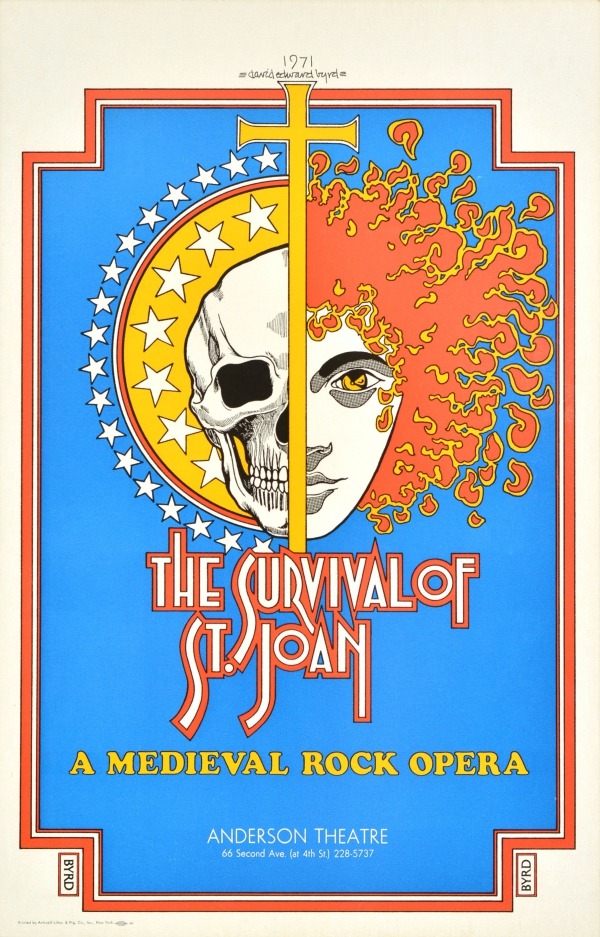
Poster for 'The Survival of St. Joan', a medieval rock opera by American rock band, Smoke Rise, from an original concept and libretto by playwright and screenwriter James Lineberger (1971). Artwork by David Edward Byrd.
#vintage poster#David Edward Byrd#1970s#The Survival of St. Joan#Smoke Rise#rock#music#rock opera#James Lineberger#joan of arc#saint joan#usa#anderson theatre#skull
266 notes
·
View notes
Text







Play for Today: The Rank and File (BBC, 1971)
"I mean, the cry of a kiddie, the hungry kiddie, that means much more to me than all the laws and all the prisons in creation. I go along with Trotsky, that life is beautiful; that the future generation cleanses of all the oppression, violence and evil and - and enjoy it to the full."
#play for today#the rank and file#single play#1971#bbc#ken loach#jim allen#peter kerrigan#bill dean#tommy summers#joan flood#johnny gee#mike hayden#bert king#neville smith#ernie mack#michael forrest#charlie barlow#bernard atha#an early surviving PfT from the very first season‚ reuniting writer Allen director Loach and much of the cast of a previous bbc play The#Big Flame (shown as part of The Wednesday Play in 1969). like Flame this is realistic docudrama dealing with recent industrial action#in this case the unofficial strike at Pilkington's glass works in St. Helens in 1970. both Allen and Loach would express some doubts about#this play in later years (chiefly that it is too closely centred on the specific event that inspired it; altho a nervous bbc insisted names#and locations be changed; without a wider view on the societal issues and workers' exploitation that had caused the strike to begin with)#but personally i think both were being overly harsh: this is a searing‚ infuriating indictment of a system which robbed honest men of their#work and of their reputations‚ backed by the mass media (who falsely reported the strike had been infiltrated by communists looking to#cause mischief; in fact there's evidence the real strike was infiltrated instead by the uk security services to smear the organisers)#and failed by a gutless Trades Union Congress. as tv drama‚ this isn't the most valuable example: it is necessarily dry in places‚ and the#steady pace and narrow focus don't lend themselves to great storytelling exactly. as social document and historical record‚ however?#this is absolutely invaluable and a stirring‚ affecting piece of television that cannot fail to make rail against the capitalist system
4 notes
·
View notes
Text
















Behold, a bracket!
Text form below the cut because trying to copy all the 256 into the alt text sounded.... horrifying. Warning for 128 matchups, seriously, this list is long, and so I've avoided adding the artists until the polls.
a note: the pinned post has started misbehaving, so only open polls will be directly linked. closed polls instead have the results page linked in the set header, all the polls are linked from there
Set 1
The Lament for Icarus (Miao He) vs The Lament for Icarus (Herbert Draper)
The angel came to me in a fever hallucination, perched upon my bed as I returned from the bathroom. vs Sweet Brown Snail
Figures vs A Philosopher Lecturing on the Orrery
Happy Shoppers vs Hubble Deep Field
Lovers Painting vs Bath Curtain
Dr. Helen Taussig vs Une Martyre
Orangoutang étranglant un sauvage de Bornéo (Orangutan strangling a Borneo savage) vs Can’t Help Myself
Rape vs Technicolor Hiroshima
Set 2
A Walk at Dusk vs Based on “Autoportrait with the Model” by Maria-Rayevska Ivanova
Diary Page vs Les Jours Gigantesques (The Titanic Days)
Dead of Night vs You Won't
Christina's World vs Bobby
Untitled (I’m Turning Into A Specter Before Your Very Eyes And I’m Going To Haunt You) vs Two Sisters (On the Terrace)
Sharecropper vs Lustmord
The Parca and the Angel of Death vs Untitled (Zdzisław Beksiński)
Stress vs The Fallen Angel
Set 3
Device to Root Out Evil vs Travelling Light
Diana vs Fifty Days at Iliam: The Fire that Consumes All before It
The Plains, from Memory vs Exotic Bodies
Doubting Thomas vs Self-Portrait in the Bathroom Mirror
Empty Nest vs Somebody Fell From Aloft
Anguish vs If I Died
Cat in Obsolete Bath vs You're Not Boring Anymore
Salvator Mundi (Savior of the World) vs Untitled (billboard of an empty unmade bed)
Set 4
There Will Be No Miracles Here vs Symphony of the Sixth Blast Furnace
Fox Hunt vs Tarpaulin
Khajuraho Group of Monuments vs Ranakpur Jain Temple
ปราสาทสัจธรรม (The Sanctuary of Truth) vs Grande Panorama de Lisboa
Heroic Head of Pierre de Wissant, One of the Burghers of Calais vs The Weather
The Daughters of Edward Darley Boit vs If this is art
Statue of Vincent and Theo van Gogh vs Jeanne d’Arc écoutant les voix (Joan of Arc listening to the Voices)
Fountain vs Judith Slaying Holofernes
Set 5
Cueva de las Manos (Cave of Hands) vs Cave of El Castillo
Chauvet Cave Bear vs Uffington White Horse
Laocoön and His Sons vs Winged Victory of Samothrace
Crouching Aphrodite vs Statue of Taweret
Guardian Figure vs Kūya-Shonin (Saint Kuya)
Ancient Greek doll vs Arena #7 (Bears)
Enbu (炎舞) (Dancing in the Flames) vs Yearning Shadows
Belfast to Byzantium vs Freedom
Set 6
The Kama Sutra of Vatsyayan vs Portraits
The Blood Mirror vs Nighthawks
Electric Fan (Feel it Motherfuckers): Only Unclaimed Item from the Stephen Earabino Estate vs "Untitled" (Portrait of Ross in L.A.)
Lady Agnew of Lochnaw vs Forgotten Dreams
Saint Bride vs Pixeles (a group of 9 works)
War Pieta vs The Sunset
The Handmaidens of Sivawara Preparing the Sacred Bull at Tanjore for a Festival vs Ajax and Cassandra
Nāve (Death) vs Abstraction
Set 7
Yes vs Meeting on the Turret Stair
Hacked to Death II vs Stańczyk
Closeness Lines Over Time vs Voice of Fire
The Maple Trees at Mama, the Tekona Shrine and Tsugihashi Bridge vs Portrait of Sir Thomas More
Survival Series: In a Dream You Saw a Way vs Takiyasha the Witch and the Skeleton Spectre
Death blowing bubbles vs The Kitchen Table Series
Painting 1946 vs In the Grip of Winter
Untitled (Black and Gray) vs NAMES Project AIDS Memorial Quilt
Set 8
Blue Plate Special vs Red Cedar
Palace of Fine Arts vs Mosque–Cathedral of Córdoba
Le Château des Pyrénées (The Castle of the Pyrenees) vs Susanna and the Elders, Restored - X-Ray
Moby Dick vs Viva la Vida, Watermelons
Venus Envy Chapter One (Of the First Holy Communion Moments Before the End) vs how to look at art
St. Sebastian vs Untitled #12
Carroña vs The invincible one
Untitled (Two Dogs) vs The Dog
SECOND HALF
Set 9
David (Donatello) vs David (Michelangelo)
The Other Side vs The Temptation of St. Jerome
Seated Woman with Bent Knees vs Starry Night
Headdress - Shadae vs Untitled for the Image Flow's Queer Conscience exhibit
Woman with Dead Child (Frau mit totem Kind) vs Les Amants (The Lovers)
Siroče na majčinom grobu (Orphan on Mother's Grave) vs You Make My World a Better Place to Find
Fighting Against SARS Memorial Architectural Scene (弘揚抗疫精神建築景觀) vs Fallingwater
Resting vs The Hull
Set 10
Olive Trees vs Worship
Glow vs Wheatfield with Crows
Study after Velázquez's Portrait of Pope Innocent X vs Untitled (He Plays Very Badly)
D.I.Y. by John Wiswell vs The Tragedy
Judith and the Head of Holofernes vs Beethovenfries (Beethoven Frieze)
The Memory of Me (How Could I Forget) vs oh god i had a really big epiphany about love and personhood but i’m too drunk for words
I am happy because everyone loves me vs 瀕危形態 (Endangered Forms)
Three Scaffolders vs Ivan the Terrible and His Son Ivan
Set 11
San Giorgio Maggiore at Dusk vs Water-Lilies, Reflection of a Weeping Willow
The Grief of the Pasha vs Monolith in Vigeland Sculpture Park
Passion vs Space Diner
Hamlet and Ophelia vs Two Earthlings
Ellen Terry as Lady Macbeth vs Seer Bonnets
Photograph from "SNAP OSAKA" Collection vs Clytemnestra after the Murder
“Untitled” (Perfect Lovers) vs The Lovers (TIE)
Kedai Ubat Jenun vs Orange Store Front
Set 12
The Apotheosis of War vs Portrait of the Dancer Aleksandr Sakharov
Julie Manet vs Mouth
The Icebergs vs Kaleidoscope Cats III
Maman vs Caza Nocturna (Night Hunt)
The Book of Kells Folio 188r: Luke carpet page vs Ardagh Chalice
Yusuf and Zulaikha vs Dome of the Rock mosaics
Rowan Leaves and Hole vs Untitled (prisonhannibal)
Le Désespéré (The Desperate Man) vs The Dedication
Set 13
Deimos vs Dog and Bridge
The Mocking of Christ vs Prudence
The Broken Column vs Siberian Ice Maiden shoulder tattoo
Transi de René de Chalon (Cadaver Tomb of René of Chalon) vs Head of Christ
The Day vs Spirit of Haida Gwaii
Eleanor Boathouse at Park 571 vs Jatiya Sangsad Bhaban জাতীয় সংসদ ভবন (National Parliament House)
Juventud de Baco (Bacchus Youth) vs Barges on the Seine
Oath of the Horattii closeup vs Visit hos Excentrisk Dam (Visit to an eccentric lady)
Set 14
Christ Crucified (With Donor) vs St. Francis
Thunder Raining Poison vs Piazza d'Italia
The Grove vs Among the Waves
Pintura Mural de Alarcón vs Sagrada Família stained-glass windows
Noonday Heat vs La Dame à la licorne (The Lady and The Unicorn)
Matroser i Gröna Lund (Sailors in Gröna Lund) vs Gielda Plakatu
Reply of the Zaporozhian Cossacks vs The Garden of Earthly Delights
Kuoleman puutarha (The Garden of Death) vs Haavoittunut enkeli (The Wounded Angel)
Set 15
i've wasted a lifetime pretending to be me vs da oracle
minus #37 vs Panel from Fun Home
Excerpt from illustrated edition of The Rime of the Ancient Mariner vs La Mort de Marat (The Death of Marat)
The Veil vs Düsseldorf 4 (Museum Kunst Palast)
Capriccio vs Zodiac calendar for La Plume
The official imperial portrait of empress dowager Cixi vs José y Maria
Blooming Lilacs vs Lágrimas De Sangre (Tears of Blood)
An Interlude vs Boy Staring at an Apparition
Set 16
Mermer Waiskeder: Stories of the Moving Tide vs The Gran Hotel Ciudad de México Art Nouveau interior
Unfinished Painting vs To Arms!
Memorial to a Marriage vs The Island
Dropping a Han Dynasty Urn vs A Few Small Nips
Saturn Devouring His Son vs Guernica
Fairy Princesses vs Lamentation over the Dead Christ
Mummy with An Inserted Panel Portrait of a Youth vs Little Girl Looking Downstairs at Christmas Party
Agnus vs The Cup Of His Murders Is Flowing Over And In His Coat Shall Be Many Curses
250 notes
·
View notes
Text

On February 2nd 1424 James I married Lady Jane Beaufort, daughter of the Earl of Somerset, in London, a true royal love affair.
Joan met her husband James I, King of Scots during his long captivity in England. After the probable murder of his elder son by an uncle, Robert III, King of Scots sent his only surviving son James to France for his safety. However, the ship 12-year-old James was sailing on was captured on March 22nd, 1406, by English pirates who delivered James to King Henry IV of England.
Robert III died a month later and James, who was nominally King of Scots, spent the first eighteen years of his reign in captivity. As Joan was related to the English royal family, she was often at court. Joan is said to be the inspiration for The Kingis Quair (“The King’s Book”), a poem supposedly written by James after he looked out a window and saw Joan in the garden.
And therewith kest I doun myn eye ageyne,
Quhare as I sawe, walking under the tour,
Full secretly new cummyn hir to pleyne,
The fairest or the freschest yonge floure
That ever I sawe, me thoght, before that houre,
For quhich sodayn abate anon astert
The blude of all my body to my hert.
Although there may have been an attraction between Joan and James, their marriage was also political as it was a condition for James’ release from captivity. Joan was well connected. She was a great-granddaughter of King Edward III, a great-niece of King Richard II, a niece of King Henry IV, and a first cousin of King Henry V.
Her paternal uncle Henry Beaufort was a Cardinal, Bishop of Winchester and Chancellor of England. The English considered a marriage to a Beaufort gave the Scots an alliance with the English instead of the French. Joan’s dowry of £6,000 was subtracted from James’ ransom of £40,000. The couple was married February 2nd, 1424, at St. Mary Overie Church, now known as Southwark Cathedral in Southwark, London, England.
James was released from his long captivity on March 28, 1424, and the couple traveled to Scotland. On May 21st, 1424, James and Joan were crowned King and Queen of Scots at Scone by Henry Wardlaw, Bishop of St. Andrews.
33 notes
·
View notes
Text
… Eleanor Cobham was a respectable lady who might expect to become a member of the household of a royal woman or member of the upper nobility, before being married and gaining a household of her own. Eleanor’s upbringing was likely to be typical of a woman of her class. She would not have had an exemplary education like Joan of Navarre did, but she does seem to have been taught to read in English, and she may even have learnt to write. Her education would have only been to a level that she would then be capable of running a knightly household and estate once married. The rest of her upbringing would have been focused on feminine values to help attract and keep her a husband, such as singing, dancing, music and needlework.
No known physical description of Eleanor exists, and only one contemporary picture of her survives. This is an illuminated miniature from 1431 of Eleanor with her future husband, Humphrey, Duke of Gloucester, from the Liber Benefactorum of St Albans by Thomas Walsingham. Eleanor and Humphrey were benefactors of the Abbey of St Albans, shown in Humphrey’s hand in the picture, but little of Eleanor’s real physical attributes can be garnered from the picture, it being a typically stylised miniature of the time. Eleanor is shown with a high forehead, the popular style, but her hair is hidden under a covering, so the colour is left a mystery. She is shown as slim and tall, but whether this mirrored her real stature cannot be known for certain. She is wearing a sumptuous red dress with a golden belt, a black head covering with a golden circlet, and a thick golden necklace, representing the wealth of her station as Duchess of Gloucester.
While there is no surviving physical description of Eleanor, it is reasonable to assume that she was an attractive woman. Jehan de Waurin, a Burgundian chronicler and contemporary of Eleanor, describes her as ‘a very noble lady of great descent … also she was beautiful and marvellously kind [pleasant]’. As she was later to attract the attention of a prince, it is likely that she was at least fairly attractive, and probably had sufficient wit and charm to go with it.
Gemma Hollman, "Royal Witches: Witchcraft and the Nobility in Fifteenth Century England"
21 notes
·
View notes
Note
Favorite twdg villain?
If I was being biased, I'd say Lilly cause I actually like her character and everything, but I personally feel like in s4 she shouldn't have been the antagonist. Not without a backstory at least, she just shows up and kidnaps kids with no context 😭
So without her, that leaves me with Carver. I prefer him over the other villains because hes just got with weird vibe around him that just gives off a sick, intimidating feeling. He's very good at talking around things and definitely had a good platter for an even better arc.
I prefer him over the St. John's since they generally just get helped by the Bandits, and I prefer him over the Stranger because the Stranger has no survival skills whatsoever, he's not too far off tho. S3 villains are garbage, I was more worried about Kate snitching than Joan 😭
#twdg#the walking dead game#telltale the walking dead#anon ask#ask biic#asks#lilly twdg#carver twdg#stranger twdg#andrew st john twdg
7 notes
·
View notes
Text
THIS DAY IN GAY HISTORY
based on: The White Crane Institute's 'Gay Wisdom', Gay Birthdays, Gay For Today, Famous GLBT, glbt-Gay Encylopedia, Today in Gay History, Wikipedia, and more …
August 1

Keith Haring – August 1 1991 (Switzerland)


1819 – Herman Melville (d.1891) novelist (Billy Budd, Moby Dick) is now considered to have been bisexual, and more and more critical scrutiny is focusing on the elements in Melville's work impinging on a host of new areas, among them post-colonialism and imperialism, race and ethnography, internationalism, body criticism and even ecology. The 1855 short story Benito Cereno is one of the few works of 19th century American literature to confront the African diaspora and the violent history of race relations in America, while The Paradise of Bachelors and the Tartarus of Maids and Billy Budd have been particularly rich for scholars of gender studies and queer studies .
Critics have long noted the basic theme of male love that runs through the works of this important American writer, from the amusing and sensuous scenes between Ishmael and Queequeeg sharing the same bed in Moby Dick, to the sinister fate of Billy Budd, the "Beautiful Sailor." Only recently however, has any scholar dared to examine Melville's life in relation to his works and suggest not only that Melville was most certainly a latent homosexual, but that the great love of his life was the lamentably heterosexual and completely unattainable Nathaniel Hawthorne.
In his biography of Melville, Edwin Haviland Miller cites example after example of the younger writer's love for the older novelist, but none as astonishing as Melville's review of Hawthorne's Mosses from an Old Manse (1850). Melville, who had only recently met Hawthorne and was in a state of exhilaration from their meeting, did not want his new friend to know that he was to review his book in The Literary World. He therefore disguised his identity by signing the review, "By a Virginian Spending time in Vermont." His infatuation with the famous writer is reflected in an extended metaphor of insemination, in which Hawthorne is clearly penetrating the love-sick Melville: "Already I feel that this Hawthorne has dropped germanous seeds in my soul. He expands and deepens down, the more I contemplate him; and further and further, shoots his strong New England roots into the hot soil in my Southern soil." Incredible!


1930 – Lionel Bart (d.1999) was an English composer of songs and musicals, best known for Oliver!
Bart was born Lionel Begleiter the youngest of seven surviving children in East London to Galician Jews, and grew up in Stepney. His father worked as a tailor in a garden shed. The family had escaped the pogroms in Galicia, which was then part of the Austrian Empire. Lionel later changed his name to Bart derived from the name of the silk screen printing firm he and one John Gorman created (G & B Arts, for Gorman and Begleiter) after completing his National Service.
As a young man he was quite an accomplished painter. When Lionel Bart was six years old a teacher told his parents that he was a musical genius. His parents gave him an old violin, but he did not apply himself and the lessons stopped. At the age of 16 he obtained a scholarship to St Martin's School of Art but he was expelled for 'mischievousness', and he gave up his ambition to be a painter. However, he took jobs in silk-screen printing works and commercial art studios. He never learned to read or write musical notation; this did not stop him from becoming a highly significant personality in the development of British rock and pop music.
He started his songwriting career in amateur theatre at The International Youth Centre in 1952 and at London's Unity Theatre the following year. While at Unity he was talent spotted by Joan Littlewood and so joined Theatre Workshop.
He first gained widespread recognition through his songwriting, which includes the hits Livin' Doll (written for Cliff Richard) and several hits including Little White Bull (for Tommy Steele). In 1957, he won three Ivor Novello awards, a further four in 1958, and two in 1960. He also wrote the theme song for the 1963 James Bond movie From Russia With Love.
His first professional musical was the 1959 Lock Up Your Daughters, based on an 18th century play by Henry Fielding. Following that, Fings Ain't Wot They Used T'Be produced by Joan Littlewood's Theatre Workshop, was notable for encouraging the use of authentic Cockney accents on the London stage.

Oliver! (1960), based on Dickens' Oliver Twist was a huge hit from the very beginning, and has sustained its popularity to the present day. The musical spawned such song hits as As Long As He Needs Me (a smash for Shirley Bassey) and Consider Yourself. In 1968 it was made into a film which won several Oscars, including best film.
Bart's next two musicals, Blitz! (1962) and Maggie May (1964), had respectable West End runs but Twang! (1965) was a notorious flop and La Strada (1969), which opened on Broadway in New York City, closed after only one performance. Bart used his personal finances to try to rescue them, selling his rights of his works to others , including Oliver!, in order to generate capital. By 1972, Bart was bankrupt. He turned to drink, and a twenty-year period of depression ensued, from which he ultimately recovered, attending Alcoholics Anonymous.
Cameron Mackintosh, who owned half the rights to Oliver!, revived the musical at the London Paladium in 1994 in a version rewritten by Lionel Bart. Cameron Mackintosh gave Lionel a share of the production royalties.
Bart continued writing songs and themes for films, but his only real success in his later years was Happy Endings, a 1989 advertising jingle for Abbey National. In 1986 Bart received a special Ivor Novello Award for his life's achievement.
Although Lionel Bart was known to be gay by those in the theatre world he was often publicly romantically linked with Judy Garland or Alma Cogan - a dead giveaway to a practiced eye.
Bart died in 1999 after a long hard struggle with cancer.
A musical play based on Bart's life and using his songs, It's a Fine Life was staged at the Queen's Theatre, Hornchurch in 2006.
I'd Do Anything, a TV talent show to cast the roles of Oliver and Nancy for a new Cameron Mackintosh West End production of Oliver! was a huge ratings hit for the BBC in 2008 and the ensuing production enjoyed a successful two-year run in the West End.


1936 – Yves St Laurent (d.2008), designer, was born in Algeria to French parents, Yves Saint Laurent had a difficult childhood. Although taunted at school, he found solace at home in his drawing and painting and occasional designs of dresses for his mother and two sisters.
He first came to the fashion world's attention when he was seventeen and studying in Paris. He won 1st prize in a dress design competition sponsored by the International Wool Secretariat. When Christian Dior saw Saint Laurent's designs, he was so impressed that he offered the young man a job as an assistant and was soon referring to Saint Laurent as his 'dauphin'. When Dior died in 1957, Saint Laurent took over the house. His first collection for Dior in 1958 was greeted enthusiastically and his 1960 collection for Dior appropriated the Left Bank style, with black leather jackets, knitted turtlenecks, and crocodile jackets with mink collars. The fashion world watched with fascination as street fashion was redesigned at the hands of a couturier.
In the same year Saint Laurent was called up to fight in the Algerian war. When he was discharged several months later, he discovered that he had been replaced as head designer at Dior - so he created his own house.
Under his own name, Saint Laurent continued to produce elegant wearable clothes that drew on a huge range of influences and he successfully tapped into the vogue for androgynous dressing that spread throughout Europe and America in the mid-1960s. By feminising the basic shapes of mens fashion, he can be credited with transforming evening wear and the working woman's wardrobe - as Armani was to do again in the 1980s.
In 1993, Yves Saint Laurent , which was by now also a major perfume house, was sold to a major company and has changed hands a number of times since, becoming part of the Gucci group in 1999.
In 1958, Saint Laurent met Pierre Bergé, who was at the time the manager and lover of the Parisian painter Bernard Buffet. At a weekend party Buffet met his future wife, and Saint Laurent and Bergé commenced a romantic relationship that lasted until 1976, when Time reported that "[Saint-Laurent's] life with Pierre Berg, his ... intimate of 15 years, has probably been as harmonious as most marriages." Right after the article appeared, the two split. After their breakup Bergé continued to serve as Saint Laurent's business manager and remained living in their jointly owned home until 1986.
Although his sexuality was hardly a secret in the fashion world, Saint Laurent did not publicly acknowledge his homosexuality until 1991, in an interview in the French daily newspaper Le Figaro.
In 2002, dogged by years of poor health, drug abuse, depression, alcoholism, criticisms of YSL designs, and 'problems' with lead designer Tom Ford, Saint-Laurent and Gucci closed the illustrious couture house of YSL. While the house no longer exists, the brand still survives through its parent company Gucci.
The pret-a-porter line is still being produced under the direction of Stefano Pilati after Tom Ford retired in 2004, while the boxer briefs sold all over the world still carry the brand name. Many gay men proudly flaunt them.
After his retirement, Saint Laurent became increasingly reclusive and spent much of his time at his house in Marrakech, Morocco.
He died June 1, 2008 of brain cancer,aged 71, after a long illness, at his residence in Paris. A few days before he died, Saint Laurent and Bergé were joined in a same-sex civil union known as a Pacte civil de solidarité in France. Yves' body was cremated and his ashes scattered in Marrakech, Morocco. The funeral attendants included Empress Farah Pahlavi, Madame Chirac, and President Nicolas Sarkozy and his wife at the time. Forbes rated Saint Laurent the top-earning dead celebrity in 2009. Part of that "earning" came from an auction of 733 items held by Christie's at the Grand Palais, ranging from paintings by Picasso to ancient Egyptian sculptures. Saint Laurent and Bergé began collecting art in the 1950s. Before the sale, Bergé commented that the decision to sell the collection was taken because, without Saint Laurent, "it has lost the greater part of its significance," with the proceeds proposed for the creation of a new foundation for AIDS research.


1941 – Ney de Souza Pereira, known as Ney Matogrosso, born in Bela Vista, Mato Grosso do Sul, is a Brazilian singer who is distinguished for his uncommon countertenor voice. He was ranked by Rolling Stone as the third greatest Brazilian singer of all time.
Matogrosso enlisted in the Brazilian Air Force at the age of 17, being later transferred to Brasília. Within a few years, Matogrosso started singing in a vocal quartet, performing at college festivals throughout Brazil. With the hope of becoming a stage actor, Ney moved to Rio de Janeiro in 1966, where he lived as a hippie and made ends meet by selling arts and crafts.
In 1971, he moved to São Paulo, adopting the artistic name Ney Matogrosso, and joined the glam rock group Secos & Molhados, which in less than 18 months became a phenomenon, selling 1 million records. Endowed with a unique counter-tenor voice and a striking stage presence, Ney’s career soared. Matogrosso was the singer and interpreter in the group Secos e Molhados. One of the most interesting moments in their music was the video-clip Flores Astrais (1974), where Matogrosso plays the role of a hypersensual character on a space-like stage. Matogrosso turned his male physiognomy and his androgynous performance into a landmark of counterculture during the most intensively repressive years of military.
After the group Secos e Molhados split up, Ney pursued a successful solo career in Brazil and abroad, obtaining several Gold and Platinum records. Famous for his outlndish costumes, make-up, daring movements and singular high-pitched voice, Ney has always been regarded as a controversial character. One of his greatest hits was the song "Homem com H" (Man with a Capital H)
According to the Brown University Center for Digital Scholarship, "Beyond Carnival: Male Homosexuality in Twentieth Century Brazil":
"By late 1960s and early 1970s, international countercultural ideas held significant sway over Brazil's urban middle-class youth. Among the counterculture's many challenges to societal norms was the destabilization of sexual codes and gender norms. As traditional insistence of premarital virginity and normative heterosexuality became regarded as antiquated and repressive, Brazil's biggest stars projected unabashed sexuality and were rumored to have homosexual affairs. Singers such as Caetano Veloso and Ney Matogrosso presented themselves as androgynous, gender-bending performers and raised important questions in society about gender roles and identities. Indeed, the overwhelming popularity of such performers reflected a growing societal acceptance of deviance from traditional Brazilian constructions gender and sexuality."
The study continued:
"Ney Matogrosso, on the other hand, was far less subtle in his subversion of traditional notions of gender and sexuality. Ney often sang entire songs in falsetto, used dramatic makeup and exotic costumes, and danced in a style that was as traditionally feminine as it was traditionally masculine. In 1978, Ney clarified his homosexuality in a magazine interview, and, in the face of widespread homophobia, he remained one of Brazil's most famous celebrities."


1961 – On this date the groundbreaking British film Victim was released. Considered a milestone in Gay cinema, the film was directed by Basil Dearden, starring Dirk Bogarde and Sylvia Syms. It is notable in film history for being the first English language film to use the word "homosexual". On its release in the United Kingdom it proved highly controversial and in the United States it was initially banned. Victim became a highly sociologically significant film; many believe it played an influential role in liberalizing attitudes (as well as the laws in Britain) regarding homosexuality.
Until the 1967 Sexual Offences Act, which implemented the recommendations of the Wolfenden report, homosexual acts between consenting adults were illegal in England and Wales. There were prosecutions and Sunday newspapers gave space to the court reports. Yet, by 1960, the police were as relaxed as possible over the old laws. There was a feeling that the code violated decent liberty. But police restraint did not deter the menace of blackmail.
When the team of producer Michael Relph and director Basil Dearden first approached Bogarde, they warned him that a lot of people had already turned down the script because the material might be considered dangerous or unwholesome. In 1960, Bogarde was 39 and just about the most popular actor in British films. He had proven himself playing war heroes (The Sea Shall Not Have Them; Ill Met by Moonlight); he was the star of the hugely successful Doctor film series; and he was a reliable romantic lead in movies like A Tale of Two Cities. He was flirting with a larger, Hollywood career—playing Liszt in Song Without End. Bogarde was suspected to be homosexual, living in the same house as his business manager, Anthony Forwood, and was compelled every now and then to be seen in public with attractive young women. He seems not to have hesitated over the role of Farr. Similarly, Sylvia Syms never flinched from the part of his wife, though apparently several actresses had turned it down.
Bogarde was nominated for a BAFTA Film award as Best British Actor and Janet Green and John McCormick's screenplay received a nomination as well. The film's director, Basil Dearden, was nominated for a Golden Lion from the Venice Film Festival.


1997 – The Icelandic Phallological Museum opened in Iceland; Located in Reykjavik, Iceland, the Phallological Museum houses the world's largest display of penises and penile parts.
The collection of 280 specimens from 93 species of animals includes 55 penises taken from whales, 36 from seals and 118 from land mammals, allegedly including Huldufolk (Icelandic elves) and trolls. In July 2011, the museum obtained its first human penis, one of four promised by would-be donors. Its detachment from the donor's body did not go according to plan and it was reduced to a greyish-brown shrivelled mass pickled in a jar of formalin. The museum continues to search for "a younger and a bigger and better one."
Founded in 1997 by retired teacher Sigurður Hjartarson and now run by his son Hjörtur Gísli Sigurðsson, the museum grew out of an interest in penises that began during Sigurður's childhood when he was given a cattle whip made from a bull’s penis. He obtained the organs of Icelandic animals from sources around the country, with acquisitions ranging from the 170 cm (67”) front tip of a blue whale’s penis to the 2 mm (0.08”) penis bone of a hamster, which can only be seen with a magnifying glass.
The museum claims that its collection includes the penises of elves and trolls, though, as Icelandic folklore portrays such creatures as being invisible, they cannot be seen.
The collection also features phallic art and crafts such as lampshades made from the scrotums of bulls.
The museum has become a popular tourist attraction with thousands of visitors a year – 60% of them women – and has received international media attention, including a Canadian documentary film called The Final Member, which covers the museum's quest to obtain a human penis.According to its mission statement, the museum aims to enable "individuals to undertake serious study into the field of phallology in an organized, scientific fashion." The museum's guest book includes comments such as, "I've never seen so many penises–and I went to boarding school!" (from a New Zealand visitor), "They're bigger in the USA," (from someone from Wisconsin) and "Is there a vagina museum?" (On this point, Sigurður has said, "I'm only collecting the male organ. Somebody else has to do the other job. I'd be interested in how they would preserve it. I think vaginas are better alive.")


1998 – The "Gay Games" opens in Amsterdam to 200,000 spectators and 15,000 athletes


5 notes
·
View notes
Photo












letters - edna st. vincent millay / eskidhayaller / night lament in hergla - leila chatti / tenderhooks - joan tierney / cassandra clare / this is how you lose the time war - amal el-mohtar / she’s the prettiest girl at the party and can prove it with a solid right hook - frank iero / in a dream you saw a way to survive - clementine von radics / fallen angels, 1995
i am your echo - el x akira
#this was going to be soooooo much longer but.#i love them sm your honor#web weaving#my ocs#el#akira
21 notes
·
View notes
Text
@ Protestant anon asking about St. Theresé of Lisiuex, I was SO EXCITED to get to talk about her and I wrote SUCH a long response and then when I hit post tumblr! ate! the whole thing! So now you’re getting the short version.
1. Born 1873, youngest of five surviving daughters. Her mother died when she was four years old, and her older sister, Pauline, became a “second mother” to her.
2. When Theresé was nine, Pauline chose to become a Carmelite nun. Carmelites are cloistered, which means they do not leave their convent and only interact with the outside world, including their families, via a visiting room like this one:

3. Shortly afterwards Theresé became ill. Doctors were unable to diagnose or treat her, but she was miraculously healed after asking the intercession of the Blessed Virgin Mary. Inspired, she discovered that she wanted to become a Carmelite as well, and live with Jesus. She spoke to the prioress, who first thought that she only wanted to be reunited with her sister, and was told to come back when she had grown up.
4. As she grew up, Theresé wrestled with scrupulousity, a spiritual illness marked by anxiety over perceived sins. Almost like religous OCD, it caused her intense distress. Another of her sisters joined the Carmelites, and Theresé became increasingly neurotic. She cried almost constantly and was warned by those close to her that she would run out of tears before she was an adult.
5. The Christmas Eve that Theresé was 13, her father said that he was relieved it was the last Christmas he would be putting candy in her shoes. Hurt, Theresé began to run up the stairs to burst into tears, but stopped halfway up, willed herself to smile, and returned back downstairs to hug her father and gratefully open her gifts. She said that Jesus worked in her heart to grow her up in an instant into a spirit of charity.
6. Filled with a zeal for souls, Theresé learned about the case of a man who had murdered two women and a child and was being executed. She began to pray for him, telling Jesus that she trusted absolutely in His mercy for even the most hardened of souls. She said that she knew that Christ could forgive even without any outward signs of repentance, but for the sake of her own consolation, asked for even the smallest sign. At the guillotine, the murderer — who had refused reconciliation — took a crucifix that was held out towards him and kissed the sacred wounds three times. Theresé read of this in the paper and was overjoyed.
7. Now fourteen years old, Theresé again asked to be allowed to become a Carmelite. The priest-director told her to return when she was twenty-one, but mentioned that she could ask the bishop. She did, and the bishop never spoke of the interview without remembering how she had put her hair up in a tactic to look older.
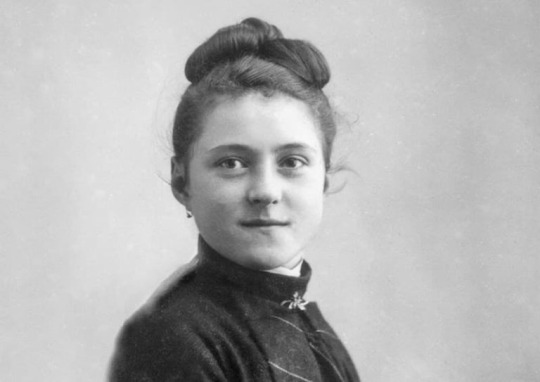
8. The bishop promised to think about it and write her with his decision. Theresé, meanwhile, went on a pilgrimage to see the pope. For time’s sake she was told not to speak during the audience, but she flung herself at his feet and begged permission to enter Carmel at 15. The pope told her that if God willed it, she would enter, and she had to be carried to the door by the papal guard.
9. That new year, the prioress told her that she would be allowed to enter, but had to be patient a little longer.
10. At the beginning of April, Theresé became a novice. She was the third of the Martin Sisters to enter religious life, and was 15 years and 3 months old.

11. For the remainder of her time at the convent, she remained fairly unremarkable. She worked with the other sisters, obeyed her superiors, and wrote letters, plays, and verse. She also starred as St. Joan of Arc in a play that she wrote and the sisters put on.
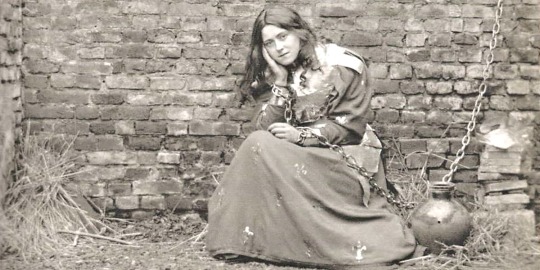
12. During this time, she developed what she called “the little way.” Little acts with great love. It is essentially an antidote to the poison of scrupulousity: instead of saying that God is offended by every tiny slight to a degree that we cannot hope to please Him, it says that God is pleased by even the tiniest gifts of love and charity. Things like bearing insults with a smile, taking on undesirable chores, even offering somebody’s irritating clicking sounds during chapel as part of your prayers. In this way, one develops the habit (heh) of love for God and neighbor.
13. In 1896, Theresé contracted tuberculosis. While in the infirmary, her prioress told her to write her autobiography. She did, and the manuscript would eventually become her book, “The Story of a Soul.”
14. Theresé said that her work would truly begin after she died, and promised to spend heaven doing good deeds on earth, describing a “shower of roses.” She died September 30th, 1897, and her last words were “My God, I love you.” She was 24.
15. Miracles began shortly after her death, and she was canonized in 1925. She was declared a doctor of the church — a saint who has significantly contributed to doctrine or theology— in 1997. When her intercession is asked, miracles are usually accompanied by roses.
96 notes
·
View notes
Text
In honor of Foundations turning one today, I'd like to take everyone on a walkthrough on all the religious symbolism, as well as double meaning behind it.
Spoiler warning: a lot of it can be traced back to Saint Jehanne d'Arc.

Obviously, the entire song wasn't about her, but knowing Gerard and his love for her, it's not too surprising that some of the lyrics match up with St. Joan's story.
So, let's talk about it!
"See the man who stands upon the hill; he dreams of all the battles won. But fate had left its scars upon his face with all the damage they had done."
(I'd like to re-emphasize that while I agree with the more discussed meaning -- you can't wallow in the past forever, no matter how traumatic, as it'll only hurt you more in the end-- I'm looking at the song through a strictly religious lense; and one that focuses on St. Jeanne, specifically.)
Jehanne had witnessed her country be at war with England since she was little.
She was well aware of it, and had even witnessed an Burgundian attack on their village of Domrémy when she was around the age of sixteen.
All through that, she waited for a miracle to save France; but the miracle was her.
The last lyric could also be about her fate as military general, leaving literal scars on her from what the English (and English supporters in France, who I will be grouping with the English for the rest of this essay), had done to her; specifically, shooting her with arrows on two seperate occasions.
"And so, tired with age, he turns the page, let the flesh submit itself to gravity."
"Let our bodies lay; mark our hearts with shame; let our blood in vain; you find God in pain."
Jehanne had her first vision at the age of thirteen, and only began understanding what it meant at the age of sixteen, shortly after Burgundian troops ran amuck; where she fully allowed herself to become one with what the Lord had told her to do by heading to Vaucouleurs -- where her Aunt and Uncle lived -- to convince Sir Robert de Baudricourt to allow her to meet "Gentle Dauphin" (her own nickname for the then-king) Charles, so she may begin her military campaign in Orléans.
She, unfortunately, was turned away for nearly a year before her newfound friends were able to convince him to let her go.
And so, she went to Chinon, performing her first miracle by identifying the Dauphin in disguise within a crowd; Dauphin Charles, soon to be King Charles VII, granted her to go to Orléans where she soon joined generals: La Hire, Gilles de Rais, and Jean de Dunois in the city.
Jeahnne, along with most of her army, believed in God and the Bible; but they are still in the military.
They had to kill others if it meant surviving.
The soldiers are begging God to let them get into heaven, even if it's just in vain. Being pitied by God is a much better fate than an eternity in hell.
The last part though, isn't really about the army, but could still work: those who died on the battlefield die in pain, and then meet God shortly after, as He took their plea for forgiveness, and allowed them into heaven.
However, I like to see it as involving Jehanne.(There will be a lot of references to her death within this post btw.)
Jehanne d'Arc was burned at the stake at the age of nineteen for witchcraft, heresy, and so much more.
Her last (audible) words were in the form of a prayer, calling out for Jesus Christ. In the face of death, and admist her pain, she had "found" the both of them in the end.
"Now, if your convictions were a passing phase, may your ashes feed the river in the morning rays. And as the vermin crawls, we lay in the foundations of decay."
Jehanne wasn't considered a witch for very long, only a few years after her death was she called a martyr by the Catholic church.
The convictions she faced in court were a literal passing phase.
Not only that, but she was burned at the stake; her body turning into ash after three times, which the English disposed of by throwing her remains in the Seine river.
The people who murdered her were still alive, acting as though they didn't kill an innocent teenager for nothing.
Jehanne's family, on the other hand, were too focused on her death to continue the fight like she would've wanted.
Her brothers, Pierre and Jean, even went as far as latching onto a woman who claimed to be Joan, even though the real Joan was long dead by then.
"He was there the day the towers fell, and so he wandered down the road. And we would all build towers of our own, only to watch the roots corrode."
Throughout her travels as an army general, she became close with King Charles VII, who even ennobled her, and her family.
Her main goal was to protect him, and escort him to safety so he could be crowned the new king of France.
Her single motive was to protect her country, and yet, it was her country who betrayed her in the end.
Once she was captured, the Duke of Burgundy sold her to the English, where she was put on trial and ultimately killed.
Charles VII did nothing to help her in the end either, as he wanted to make amends with England, so Jehanne was alone fending for herself where she was assaulted and subjected to mental (and near physical) torture.
"But it's much too late, you're in the race. So we'll press and press 'til you can't take it anymore."
But even then, Jehanne was persistent. She attempted to escape the prison multiple times – once by jumping out of her 21-foot tall tower and living – but ultimately failed. (Which was something that was used against her faith in court.)
She was also supposed to be guarded by women of the church, but instead was "guarded" by Englishmen; who allowed a well-respected English Lord to sexually assault her. She fought back, and he eventually left before it could escalate.
Jehanne was always more comfortable around women; when given the chance, she'd prefer sleeping next to women than men-- but she did have few men she was comfortable around.
Even after she had initially signed a paper saying she was to not discuss her visions or crossdress while living out the rest of her life in prison, the men who held her trial were quickly called to come back to the prison, where they found her dressed in men's clothing once again; so she was put to death.
She did say that she would've gladly worn dresses if it meant she could attend mass (which she hadn't been able to see), but the fact she was forced into a prison with only men more than likely had something else to do with it.
"Let our bodies lay; mark our hearts with shame; let our blood in vain; you find God in pain."
[See previous]
"And if, by his own hand, his spirit flies, take his body as a relic to be canonized. Now, and so he gets to die a saint but she will always be a whore."
(i adore this part btw it's THE best my chem lyric idc!!)
This one is more metaphorical. Because obviously, the only one in that courtroom to be canonized was Jehanne, meanwhile, no one even knows her murderers names; unless you're super into the case of Jehanne d'Arc.
But at the time, the English and French kings were seen as heroes; in their lifetimes, for the most part, they were seen as the good guys, while Jehanne was seen as a heretic.
"Against faith! (Cage all the animals!)"
Many of her murderers claimed to care about her, and they just wanted the best for her, ehen in reality, the English caged her and her brothers in seperate cells, who they deemed to be a danger.
By imprisioning, and ignoring everything Jehanne said about her visions, the church was going against their own faith in God.
"Against all life! ('Cause the message must be pure!)"
The English and the Church putting her to death is one of the huge things that God should be against; killing people. Obviously. (It's kinda funny imo that whenever someone murdered someone in the Bible their punishment was...also.. to be murdered? But oh well.)
Especially those who have a direct order from Him to fulfill a task; anyone who gets in the way of that task will not have a pretty fate.
The only reason why so many people went along with her execution was because they marketed it as being a good deed– "it's okay if we do this because we won't have to worry about losing this war anymore."
"Against change! (You can wander through the ruins!)"
One of the main reasons Jehanne was killed was because she wore mens clothing, which goes against the Bible.
However, the church failed to mention that the Bible states crossdressing is okay, under certain circumstances; which Jehanne fell into.
She was still murdered for her religious beliefs, and for her ideals in general, but the main reason was because she wore armor in order to protect herself from battle, as well as from the men she was leading.
"We are plagued! (But the poison is the cure!"
Jehanne d'Arc was both the poison and the cure.
The poison against the English, as her persistance was something that both sides hadn't seen throughout the entire war.
And she was the cure for the French for the same reason.
The plague, on the other hand, was the war itself.
Any form of plague is known to last for a long amount of time, sometimes, without having a way to fight it for even longer.
This is the same case here.
It took ninety-two years for Jehanne to, basically, pick France up from its bootstraps and start to cause serious damage to the English.
"You must fix your heart."
As stated previously, Jehanne wasn't supposed to be put to death originally.
She had signed a paper that said she would not continue to speak about the voices she heard, and she would go to prison for the rest of her life.
That was considered a moment of weakness for Jehanne, as only a few days later, she was back in her armor and stated she had another vision from the same saints as before.
I see this as St. Catherine of Alexandria, St. Margaret of Antioch, and St. Michael The Archangel during that time telling her that it'll be okay as long as she still has full faith in the Lord; which she did.
Those Saints were there to guide her, which also meant being herself and doing the thing everyone hated her for.
"And you must build an altar where it swells."
As she waited for news about what was to come, Jehanne still prayed, and found ways to worship God despite her situation.
As tensions only continued to rise, she never lost her faith.
"When the storm it gains, and the sky it rains, let it flood, let it flood; let it wash away."
Again, I see this at those Saints during that vision telling her to allow that fear to take over for a short period of time, as it will help her become stronger in the end.
"And as we stumble through your last crusade, will you welcome your extincion in the morning rays?"
"And as the swarm it calls we lay in the foundations–"
Jehanne's last battle was getting to that stake.
With a mirtire listing off her convictions, she was lead and tied to the wooden stake in the middle of Rouen, where Bishop Pierre Cauchon began his homily. She was fairly calm up until her address, where she broke down.
She knew that soon, she would meet those who guided her through her journey, and she welcomed everyone with open arms through her fear.
The "swarm" here is Archangel Michael, Catherine of Alexandria, Margaret of Antioch, and God Himself calling out to her as she burned.
They all led her through those battles, and in her death, finally were able to accept her as one of their own.
"Yes, it comforts me much more. Yes, it comforts me much more. To lay in the foundations of decay."
Again, personally, I see this as Jehanne's brothers finding comfort in thinking their sister is still alive, even though they know she isn't.
They were both captured alongside her, and yet, they like living in ignorance instead of facing that harsh reality.
"Get! Up! Coward!"
This time, it isn't any of the Saints Jehanne saw telling her to keep going.
I see it as Jehanne herself telling the people (more than likely, her brothers) she led to get up and continue fighting; they almost won, they were so close.
So, they did.
"I believe firmly what my Voices have told me, that I shall be saved; I believe it as firmly as if I were already there." -Saint Joan Of Arc.
The French continued fighting until Bordeaux surrendered, marking the French victory, which was won only twenty-two years after Jehanne's execution.
Not only that, but her prediction on what would occur seven years after her trial came true: King Charles VII created the Pragmatic Sanction of Bourges, which means that no trial can be held without the authority of the Pope.
Meaning, Jehanne's trial couldn't have been held unless the Pope wanted it to happen. She had requested that the Pope at the time be contacted about her trial, but was denied because of how long it would've taken.
She would've been forty-one at the time the French came out victorious.

#i cried a bit writing this i wont lie#she deserved so much better#i love her so much#(also i apologize if i got anything wrong)#(im still new to St. Joan research lol)#my chemical romance#mcr#my chem#gerard way#frank iero#ray toro#mikey way#joan of arc#saint joan of arc#jeanne d'arc
8 notes
·
View notes
Text


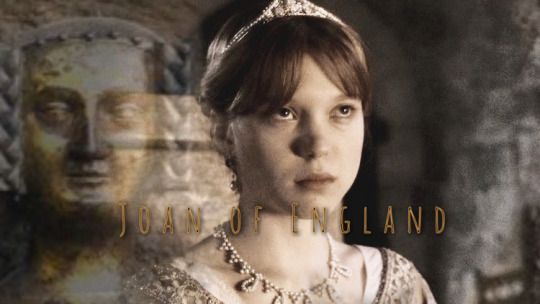



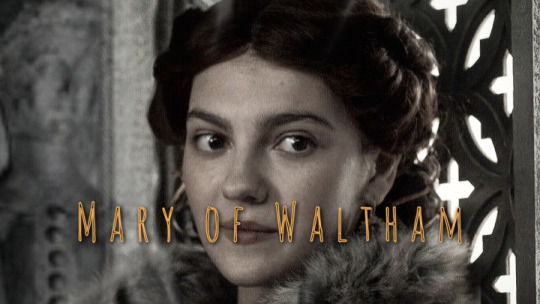


“The Black Prince had received the best education available. He was taught by the scholar and astrologer Dr Walter Burghley, and was expected to excel as the future King of England. This served him well for he gleaned a sense of his own majesty from an early age: at seven he was even accoutred with his own suit of armour. Whilst his parents were in Flanders, the year before John of Gaunt's birth, the Prince opened Parliament on behalf of the King.'
Before he was ten, the Prince led an elite entourage, greeting the envoys of the Pope at the gates of the City of London (in the fourteenth century London was still encased inside a large defensive wall, with around seven gates that allowed access from north to south of the City).
Aged ten, the Prince represented his father as the head of state, and even served as head of the realm whilst Edward Ill was in Antwerp around the time of John of Gaunts birth. Thrust onto centre stage, the Black Prince's ability to work the crowd came from ample experience at a young age in the public eye. Alongside his glittering public image, the Black Prince managed extensive land and property in Cheshire and Cornwall, overseeing local administration, and cultivating loyalty from his tenants.
When John of Gaunt lived with his brother he was expected to learn the skills required for leadership military and domestic. This period of fraternal bonding forged an enduring closeness between the two boys, despite the ten-year age difference between them.
The military victories of Prince Edward were legendary. He went on to be the hero of Poitiers, and his reputation was that of a chivalrous prince, albeit an arrogant one. During the Battle of Poitiers, the Black Prince captured the French King, John II. That night, he served his royal captive on bended knee as a page.
Isabella Plantagenet, born two years after the Black Prince and named after the dowager Queen, was equally as indulged by Edward Ill as her older brother. She ran up vast debts due to her extravagant lifestyle. (…) She eventually fell in love with, and married, one of the King’s hostages from Poitiers, Enguerrand de Coucy, a French aristocrat. During the war, Councy (…) refused to fight for either England or France.
Princess Joan was five years older than John of Gaunt, followed by William of Hatfield who died in infancy, and was subsequently buried in York. His death was followed by the birth of another prince, Lionel, who would grow to be the giant of the Plantagenet family, an improbable seven feet tall according to chronicler John Hardyng. After John, came four younger surviving siblings: Edmund, Mary, Margaret and Thomas, filling the royal nursery.
Aged fourteen, Edward's ‘dearest daughter' Joan left England to marry Pedro of Castile, cementing an Anglo-Castilian alliance crucial to Edward's military agenda. As her ship drew into the harbour at Bordeaux, her retinue were unaware of the horror they were about to face: the relentless and devastating Black Death now spreading quickly throughout Europe. The royal party fled to Loremo, a small village in ordeaux, but the Princess could not outrun the disease. Joan died unwed on I July 1348, with no family around her. His sister's death had a lasting impact on John of Gaunt; in 1389 he endowed an obit - an intimate religious service - for her at the Cathedral of St André at Bordeaux, where she was buried.”
Carr, Helen. The Red Prince.
#plantagenet dynasty#plantagenets#house of plantagenet#edward iii#plantagenet#John of Gaunt#Edward the black prince#Isabella Plantagenet#Mary Plantagenet#Joan Plantagenet#Margaret plantagenet#Thomas of Gloucester#Thomas of Woodstock#Lionel of Clarence#Lionel of Antwerp#Lionel Plantagenet#John#John Plantagenet#Philippa of Hainault
17 notes
·
View notes
Note
okay now that you’ve seen in a glass cage, here’s what i meant by st. joan and unmade pasolini: one of the inspirations behind the film is gilles de rais. so in my mind that makes rena the joan of arc figure. the joan/rena venn diagram is not one circle, but it does always get me thinking st. joan in the 20th century thoughts as well as thoughts about the general fact that there’s a canonized saint whose friend and supporter was a boykiller. this is the what if gilles de rais adopted joan of arc movie to me (although typing that out i realize you could make a very different film with that starting premise) also i was told that pasolini intended salo to be the first in a trilogy of death to follow up his trilogy of life and that the next one would have been about gilles de rais. so in my heart that makes this movie a sister to that movie that never was. also also i am obsessed with the setting as a metaphor for fascism and it’s legacy. like that place was falling apart to such an extent that it was dangerous to film in (a big piece of glass almost killed the producer). alright! i’ll let you go! have a good day!! :))))
wont lie i diddd have to look up who gilles de rais is (ik fake tumblrina moment </3) but omg!! this is sooo on point. heard about the trilogy of death too & not even sure if we like fully know if thats true or not but idc to me its true and factual and i'll forever be mad we didnt get that. also!! i love a good house metaphor & the fact that it was actually falling apart & a piece of glass almost killed the producer?? thats insane, like obv good that he survived lmao but wow that is soo fascinating, gonna need to look the movie up on wikipedia or smthing cuz now i wanna know more about the production. oh also have a good day anon im literally forever in ur debt for that recommendation (havent been able to stop thinking about it, immediately gonna go back to posting the screenshots i made so look forward to that ig lmao)
#oh also anon have u ever read the carnivorous lamb bc in a glass cage sort of reminded me of it a little bit -#- as in: taking the role of the mother/father and the decay of the house as a metaphor for fascism (& also the surface level fact#that both of them take place in 1950s spain). if not: thats my official recommendation to u!!!#ask
3 notes
·
View notes
Text

2023 Books Read
Rou Bao Bu Chi Rou | The Husky and His White Cat Shizun/Erha He Ta De Bai Mao Shizun, Vol. 1
Arthur Miller | The Crucible: A Play in Four Acts
R.F. Kuang | Babel
Leigh Bardugo | Six of Crows
Leigh Bardugo | Crooked Kingdom
Joseph Conrad | Heart of Darkness and Selected Short Fiction
Rou Bao Bu Chi Rou | The Husky and His White Cat Shizun/Erha He Ta De Bai Mao Shizun, Vol. 2
Xiran Jay Zhao | Iron Widow
Rosamund Hodge | Bright Smoke, Cold Fire
Yoon Ha Lee | Ninefox Gambit
Ann Leckie | Translation State
N.K. Jemisin | The City We Became
Kristyn Merbeth | Fortuna
Glynis Peters | The Secret Orphan
Jackie Keswick | Caught
Leslie Marmon Silko | Ceremony
Amélie Wen Zhao | Song of Silver, Flame Like Night
Peter Stark | Astoria: John Jacob Astor and Thomas Jefferson's Lost Pacific Empire: A Story of Wealth, Ambition, and Survival
Rou Bao Bu Chi Rou | Remnants of Filth/Yuwu, Vol. 1
Christina Thompson | Come On Shore and We Will Kill and Eat You All: A New Zealand Story
Ursula K. Le Guin | The Left Hand of Darkness
Emily St. John Mandel | Station Eleven
Kristen Painter | The Trouble With Witches
Joan He | Strike the Zither
Sharon Shinn | Whispering Wood
Hester Fox | The Last Heir to Blackwood Library
I enjoyed most of the books, although three were very meh/borderline a waste of time. Of the 25 books on this list, I believe that 21 were written by women and 4 by men. Six of the authors are Chinese or Chinese Americans. Some of the authors are favorites of mine (Jemisin, Leckie), but I'm looking forward to reading more by Joan He, Amélie Wen Zhao, and Xiran Jay Zhao - especially the continuations of the series.
#books read 2023#there were at least 10 I didn't get to#so I may hit those in 2024#but priorities are the series continuations mentioned above
1 note
·
View note
Text


15th July 1445 saw the death of Joan Beaufort, wife and Queen Consort of James I.
I like the story of Joan, or Jane as she became known up here, as she married King James out of love, unlike most royal nuptials, although, yes there were political advantages as well, there is no doubt the couple met and fell in love first.
Joan met King James during his long captivity in England. After the probable murder of his elder son by an uncle, Robert III, King of Scots sent his only surviving son James to France for his safety. However, the ship 12-year-old James was sailing on was captured on March 22, 1406, by English pirates who delivered James to King Henry IV of England.
Robert III died a month later and James, who was nominally King of Scots, spent the first eighteen years of his reign in captivity. As Joan was related to the English royal family, she was often at court. Joan is said to be the inspiration for The Kingis Quair (“The King’s Book”), a poem supposedly written by James after he looked out a window and saw Joan in the garden.
And therewith kest I doun myn eye ageyne, Quhare as I sawe, walking under the tour, Full secretly new cummyn hir to pleyne, The fairest or the freschest yonge floure That ever I sawe, me thoght, before that houre, For quhich sodayn abate anon astert The blude of all my body to my hert.
Although, as I said earlier the couple loved each other, their marriage was also political as it was a condition for James’ release from captivity. Joan was well connected. She was a great-granddaughter of King Edward III, a great-niece of King Richard II, a niece of King Henry IV, and a first cousin of King Henry V.
Her paternal uncle Henry Beaufort was a Cardinal, Bishop of Winchester and Chancellor of England. The English considered a marriage to a Beaufort gave the Scots an alliance with the English instead of the French. Joan’s dowry of £6,000 was subtracted from James’ ransom of £40,000. The couple was married February 12, 1424, at St. Mary Overie Church, now known as Southwark Cathedral.
James was released from his long captivity on March 28th, 1424, and the couple travelled to Scotland.
On May 21st, 1424, James and Joan were crowned King and Queen of Scots at Scone by Henry Wardlaw, Bishop of St. Andrews.
7 notes
·
View notes
Text
When an elementary teacher told my parents "I think your kid might be autistic" they pulled a "No, my child is just FINE" and switched me and my siblings to Catholic school.
This school had a guideline that you could dress up for Halloween as long as you dressed up as a biblical character. Lots of Angels, Joan of arcs, St. Francis, or even vaguely historical robes and stuff.
I dressed up as the Virgin Mary and added cat ears, a tail, whisker makeup and tap shoes.
No photos survive but accept this artistic rendition.

#Halloween#catholic school#yes I do love playing a fucked up cleric in dnd nowadays#original content
13 notes
·
View notes
Text
Gerald Kevin Sauter
Gerald Kevin Sauter
Williamsburg
Gerald Kevin Sauter was born April 25, 1934, at his home near Millersburg, Iowa, the son of Michael F and Agatha Mary (Wagner) Sauter. He graduated from Millersburg High School in 1952 and went on to spend two years at St. Ambrose College. Kevin was drafted into the United States Army, and spent two years in the reserves. He was a lifelong farmer, farming with his brothers. On June 15, 1957, Kevin was united in marriage to Phyllis “Dee Dee” G King at St. Bernard’s Catholic Church in Millersburg. They were married 65 years this past June! Kevin was a member of St. Joseph Catholic Church in North English and the Knights of Columbus. He enjoyed playing baseball in his younger years, watching the Chicago Cubs and golfing. Kevin died on Tuesday, Dec. 20, 2022, at Compass Memorial Hospital in Marengo at the age of 88 years.
He is survived by his wife, Dee Dee of Williamsburg; three daughters, Shari (Dann) Harwood of Norway, Julie (Don) Meyer of Deep River and Amy (Steve) Greene of Deep River; two sons, Jerry (Shannon) Sauter of New River, Ariz., and Joe (Erika) Sauter of Williamsburg; 13 grandchildren; 19 great-grandchildren; seven great-great-grandchildren; a sister, Audrey Weldon of Williamsburg; a brother, Michael Sauter of Deep River; a sister-in-law, Marge Sauter of North English; and numerous nieces and nephews. He was preceded by his parents; brothers, Claire, Jim and Paul Sauter; sisters, Mary Kathleen Sauter, Barbara DeDecker, Joan Hadley and Kay Joens; and his grandson, Matthew Agnew.
Funeral Mass will be held 1 p.m. on Wednesday, Dec. 28, 2022, at St. Joseph Catholic Church in North English. Visitation will be Wednesday from 11 a.m. until service time. A general memorial fund has been established. Messages and tributes may be left at www.powellfuneralhomes.com.
December 24, 2022
Hammond Louisiana Ukiah California Dike Iowa Maryville Missouri Secretary Maryland Winchester Illinois Kinsey Alabama Edmundson Missouri Stevens Village Alaska Haymarket Virginia Newington Virginia Edwards Missouri
https://unitedstatesvirtualmail.blogspot.com/2022/12/gerald-kevin-sauter.html
December 24, 2022 at 03:03AM
Gruver Texas Glens Fork Kentucky Fork South Carolina Astoria Oregon Lac La Belle Wisconsin Pomfret Center Connecticut Nason Illinois Roan Mountain Tennessee
https://coloradovirtualmail.blogspot.com/2022/12/gerald-kevin-sauter.html
December 24, 2022 at 03:41AM
from https://youtu.be/GuUaaPaTlyY
December 24, 2022 at 04:48AM
3 notes
·
View notes